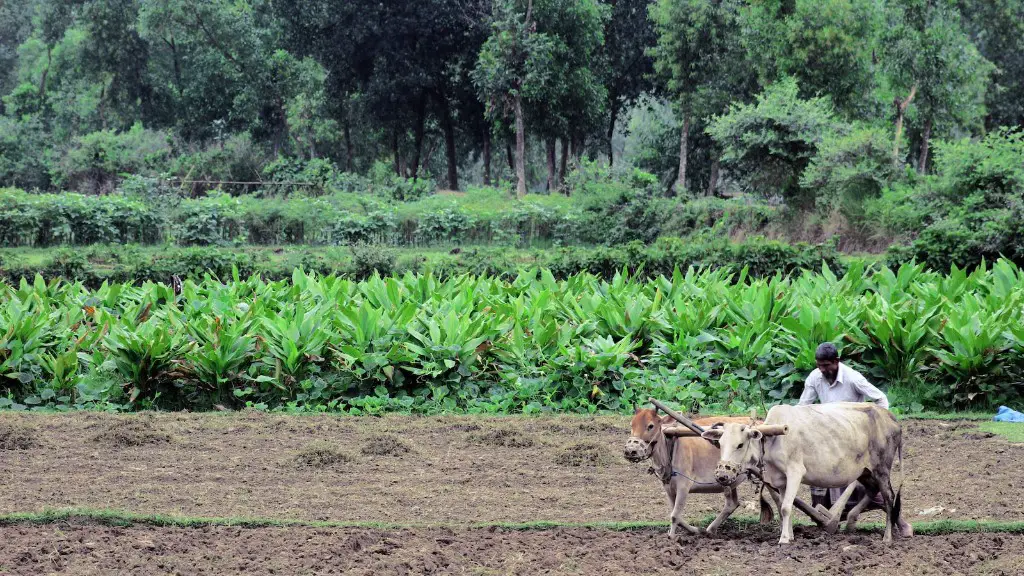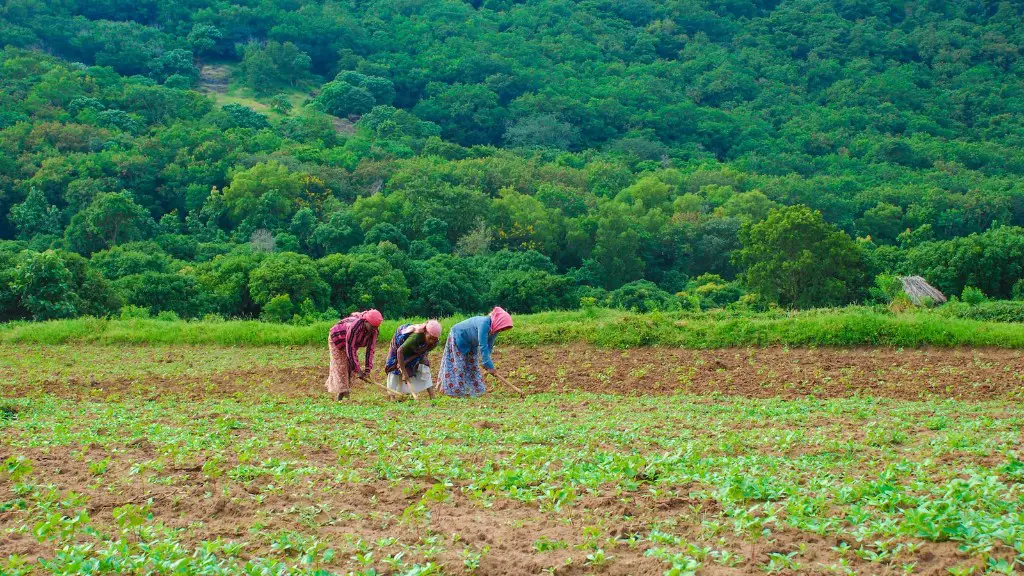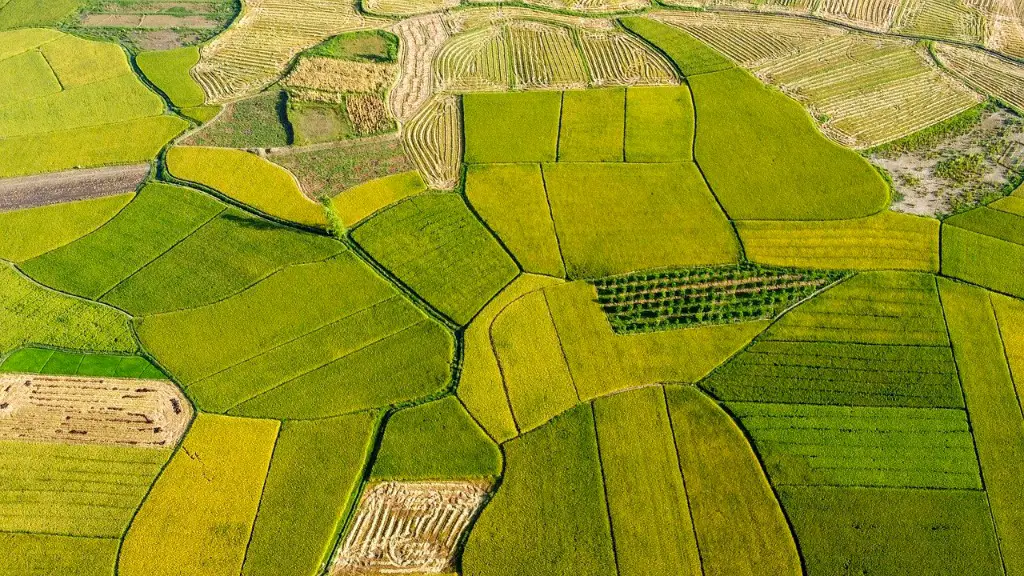Wet monsoons are an integral part of the agricultural systems in South Asia. Monsoonal rains provide vital and necessary water for the crops and ecosystems found in the region. Without these dependable seasonal rains, the agricultural production in South Asia would be greatly reduced, causing economic, environmental and food crisis.
The monsoons bring much needed rain and moisture to South Asian ecosystems. Crop irrigation is a necessity during the dry periods; not just to ensure a healthy crop, but to replenish soil moisture that is lost due to the effects of evapotranspiration. The soil can become so dry it becomes inhospitable to healthy crops and the buildup of salinity in some areas can become too great for crops to tolerate.
Monsoonal rains work hand in hand with the farming techniques employed in South Asia. Planting is based on the start and length of the monsoons, in order to ensure that crops are planted, harvested and sold in optimal conditions. Monsoonal weather also affects the types of crops that are chosen for planting, as some plants are more suited to the wetter conditions than others.
South Asia’s monsoons are responsible for recharging the aquifers beneath the surface of the land. Water from the monsoon is quickly absorbed by the deep soil, providing additional water that can be stored and used in times of drought and crop water shortages. The availability of this stored water during dryer periods aids in stabilizing the region’s agricultural production, as more stored water means prolonged production of vital crops throughout the year.
South Asia’s agricultural industry also relies heavily on wet monsoons because the floods it brings soil nutrients and also help to flush out salt from inland soils, thereby reducing stress on the land from over-fertilization. The rains also help to spread the nutrients uniformly around the country, for example, aiding in the growth of crops in the poorer, less fertile areas of India.
The wet monsoon season is also important for its ability to control pests. By bringing in more moisture, the monsoons help to limit the spread of pest infestation and the development of insect-borne diseases. This helps to maintain healthy plants and healthy livestock which is paramount to maintaining farm production throughout South Asia.
In conclusion, the wet monsoons of South Asia play a critical role in the health, productivity, and stability of the region’s agriculture. Not only do they provide necessary moisture to the soil, but they also bring nutrients, flush out salt and control pests. These factors are essential for maintaining the agricultural industry of South Asia, making wet monsoons an essential piece of the puzzle.
The influence of the monsoon on plant life and soil
One of the most important aspects of the monsoon is its influence on the soil and plants in the South Asian region. Not only does the monsoon bring vital water for agricultural production and replenish soil moisture, but it also helps to flush out salt from inland soils. In addition, the nutrient content of the soil is increased due to the influx of water and the moisture helps to spread these nutrients more evenly across the terrain. As a result, areas that are usually poor in soil fertility may have significantly improved yields.
Moreover, the rains bring more than just water. They also bring oxygen and other essential nutrients to the soil, which help to promote any plants that have germinated during the wet season. This excessive water can also help to flush away harmful elements, such as salts, thus helping protect crops and vegetation.
By creating an environment that is healthier for plants and soil, the monsoons become necessary for the productivity of the region’s agricultural production. Without the abundance of water, plants would suffer from drought and soil fertility would quickly deplete. This would make farming difficult, if not impossible, in many areas and cause significant distress for those relying on agricultural production for their livelihood.
The monsoon season also brings an abundance of water for irrigation. This not only helps to support the growth of crops and livestock, but it also relieves stress on the land caused by frequent droughts and other dry periods. By providing the necessary water for irrigation it also reduces the need for additional resources, such as water pumps, which can be costly to operate over a prolonged period of time.
Finally, the monsoon brings in much needed water to replenish groundwater sources. In addition, the rains help to build up the water table and recharge the aquifers beneath the surface of the land. These underground water sources provide a valuable resource that can be tapped in times of drought, helping to maintain a healthy agricultural production throughout the region.
Managing the monsoon’s crop hazards and unpredictability
The monsoons can bring about many challenges for those involved in agricultural production in South Asia. Heavy rains and floods can damage crops, erode the land and drown livestock, all of which can reduce the productivity and efficiency of the region’s agricultural industry.
To help counter these issues, farmers in South Asia have adopted techniques that can both alleviate and minimize the damage caused by the monsoons. For example, runoff techniques such as crop biasing are used to ensure that excess water can be trapped and held in farmland reservoirs, as well as soil conservation techniques like terracing and water-conserving irrigation systems to help retain soil moisture during dry spells.
In addition, farmers in South Asia are often mindful of the danger of over-irrigation, as too much water can harm the crops, leach out vital nutrients, deplete soil structure, and potentially weaken crop resistance. By understanding this, farmers can often time their planting and harvesting schemes, as well as pest and disease management strategies, to better prepare for any potential monsoonal hazards.
However, no matter how advanced these measures are, the unpredictability and destructive power of the monsoften mean that some damage, such as floods and drought, are inevitable in the region. As such, farmers in South Asia often invest in crop insurance and other resources in order to be struck if their crops are critically damaged by monsoonal weather.
In general, those involved in agricultural production in South Asia are often mindful of the effects and risks posed by the monsoon season. From understanding the benefits of the rain to taking measures to minimize the damage, the monsoon season is an integral part of the agricultural systems in South Asia and is an essential factor to consider when planning farming strategies.
The importance of monsoons to the food supply
The monsoons of South Asia are important not only for their effects on the land, but for their contribution to the food supply as well. Without the water and nutrients brought by the monsoons, crop production in the region would be extremely limited, leading to potential food shortages.
The monsoons also reduce the need for additional resources that are often expensive to acquire, such as additional water pumps, fertilizers, and pesticides. This cost savings can help to keep prices low in the region, ensuring that food reaches people in the most remote areas of South Asia.
The monsoons also help to control pests and lower the spread of insect-borne diseases. This keeps crops safe and healthy, furthering the availability of food in the region. The monsoonal season also helps regulate the cattle industry, with the possibility of feed shortages after a particularly wet season.
The monsoons of South Asia are a vital resource to the region’s food supply. Not only do they provide much needed water and nutrients, but they also help reduce costs and protect against pests and other dangers. As a result, the monsoons of South Asia play a crucial role in helping provide food security in the region.
Economic implications of wet monsoons
The monsoons of South Asia have a significant impact on the region’s economy. The influx of water created by the monsoons helps to support food production systems and reduces the cost of agricultural production by providing water that would otherwise be expensive to obtain.
Intense seasons of monsoons can bring about floods, which can damage homes, roads, and economy leading infrastructures. This can also lead to a reduction in government revenue and an increase in spending as the government works to rebuild affected areas.
While floods can negatively affect the region’s economic security, they can also lead to economic gains. For example, after a particularly wet season the fertile soil can improve agricultural production, leading to increased revenue and improved economic conditions.
In addition, a wet monsoon season can bring an abundance of water, which can be conserved in reservoirs and be used when irrigation is needed during dry periods. This helps to ease the burden of increasingly expensive water pump and irrigation systems and reduces the cost of maintaining healthy crops.
Finally, the wet season can also help to spread jobs across the region. In the aftermath of a heavy season, there is often much reconstruction and rebuilding that needs to take place, leading to increased employment. This helps to ensure that the agricultural industry of South Asia remains a major contributor to the region’s economy.
Conclusion
The wet monsoons are an essential part of the life of South Asia. Not only do they provide much needed water and nutrients, but they also help to control pests and regulate livestock. Furthermore, the monsoon season is an important factor in maintaining the economic health of the region by providing an abundant source of water and a booming agricultural industry.





